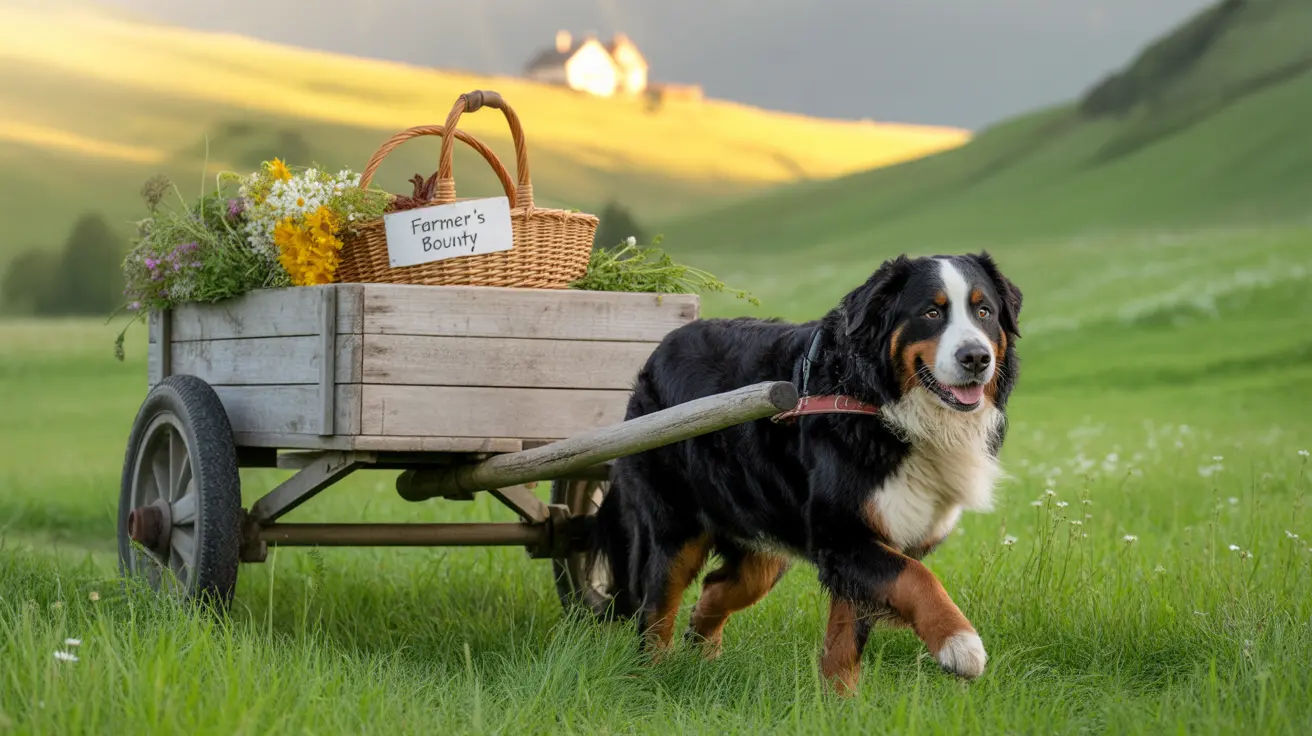Switzerland's rich canine heritage has given the world some of the most remarkable and versatile dog breeds. From powerful mountain dogs to agile hunters, Swiss dogs have earned their reputation as exceptional working companions and beloved family pets. In this comprehensive guide, we'll explore the diverse world of Swiss dog breeds, their unique characteristics, and what makes them special.
The Four Swiss Mountain Dogs (Sennenhunds)
At the heart of Swiss dog breeding tradition are the four Sennenhunds, each bred for specific purposes in the Alpine regions. These mountain dogs share distinctive tri-colored coats but vary in size and temperament.
The Greater Swiss Mountain Dog
The "Swissy" stands as the largest of the Sennenhunds, renowned for its impressive strength and gentle disposition. Males typically weigh between 115-140 pounds, while females range from 85-110 pounds. Originally used as draft animals and dubbed the "poor man's horse," these dogs played a crucial role in Swiss farming communities.
The Bernese Mountain Dog
Distinguished by its luxurious long coat, the Bernese Mountain Dog combines strength with elegance. These dogs excel at cart pulling and herding, while their patient and affectionate nature makes them outstanding family companions. Their striking appearance and gentle temperament have made them one of the most popular Swiss breeds worldwide.
The Appenzeller and Entlebucher Mountain Dogs
The medium-sized Appenzeller Sennenhund features a distinctive curled tail and high energy levels, making it an excellent watchdog. The compact Entlebucher Mountain Dog, the smallest of the Sennenhunds, brings agility and intelligence to herding tasks while maintaining the family-friendly nature characteristic of Swiss breeds.
Swiss Hunting Dogs
Switzerland's hunting tradition has produced several remarkable breeds, including the Swiss Hound and Small Swiss Hound. These breeds demonstrate exceptional tracking abilities and stamina, perfectly suited to pursuing game through challenging Alpine terrain.
The Iconic St. Bernard
Perhaps Switzerland's most famous canine export, the St. Bernard earned worldwide recognition for its heroic rescue work in the Alps. These gentle giants combine impressive size with a patient, caring nature, making them excellent therapy dogs and family companions.
Modern Care and Living Requirements
Swiss dog breeds generally require consistent exercise, mental stimulation, and proper grooming to maintain their physical and emotional well-being. Their thick coats need regular maintenance, especially during shedding seasons, and most breeds benefit from having a job or purpose, whether it's competitive sports, therapy work, or family activities.
Frequently Asked Questions
What are the key differences between the Greater Swiss Mountain Dog and other Swiss mountain dog breeds?
The Greater Swiss Mountain Dog is the largest and strongest of the Sennenhunds, featuring a short, dense coat unlike the Bernese's long fur. It typically shows more independence and requires less grooming than its mountain dog cousins while maintaining the characteristic steady temperament.
How do I care for the thick coat of a Swiss mountain dog like the Bernese or Greater Swiss Mountain Dog?
Regular brushing 2-3 times weekly, increasing to daily during shedding seasons, is essential. The Bernese needs more intensive grooming due to its long coat, while the Greater Swiss Mountain Dog's shorter coat requires less maintenance but still needs regular attention to manage shedding.
Are Swiss dog breeds like the Appenzeller Sennenhund and Entlebucher Mountain Dog good family pets and watchdogs?
Yes, both breeds excel as family companions and watchdogs. They combine natural protective instincts with friendly dispositions, though they require proper training and socialization from an early age to manage their strong herding instincts.
What common health issues should I watch for in large Swiss breeds like the Greater Swiss Mountain Dog?
Common health concerns include hip dysplasia, bloat (gastric torsion), and joint issues. Regular veterinary check-ups, maintaining proper weight, and avoiding vigorous exercise around mealtimes can help prevent these conditions.
How active are Swiss hunting dogs such as the Swiss Hound and Small Swiss Hound, and what exercise do they require?
These breeds need significant daily exercise, typically 1-2 hours of vigorous activity. They thrive with activities that engage their hunting instincts, such as tracking exercises and secure off-leash running in fenced areas.






